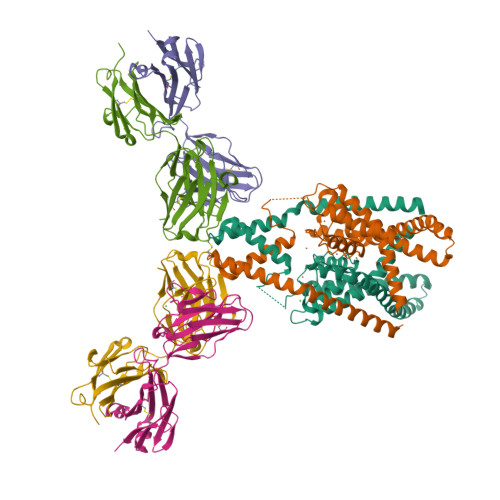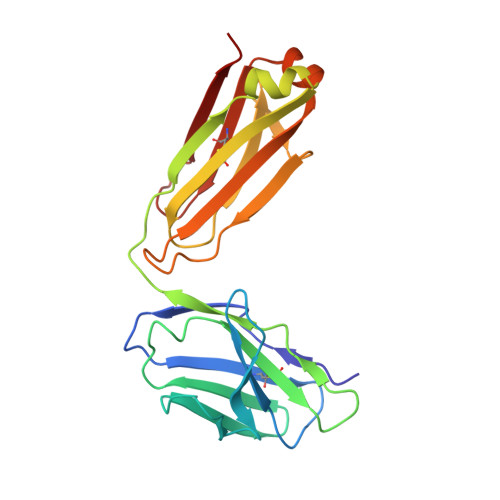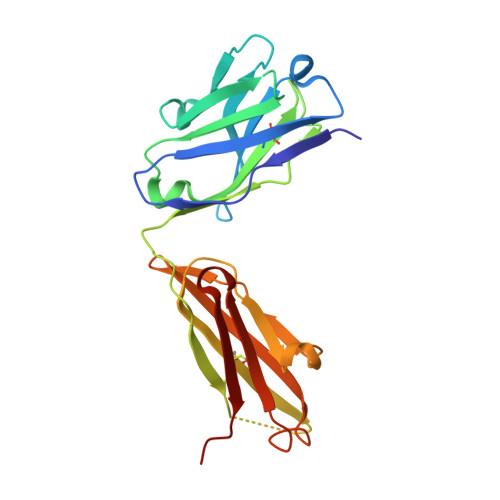Physical basis for distinct basal and mechanically gated activity of the human K + channel TRAAK.
Rietmeijer, R.A., Sorum, B., Li, B., Brohawn, S.G.(2021) Neuron 109: 2902-2913.e4
- PubMed: 34390650
- DOI: https://doi.org/10.1016/j.neuron.2021.07.009
- Primary Citation of Related Structures:
7LJ4, 7LJ5, 7LJA, 7LJB - PubMed Abstract:
TRAAK is a mechanosensitive two-pore domain K + (K2P) channel localized to nodes of Ranvier in myelinated neurons. TRAAK deletion in mice results in mechanical and thermal allodynia, and gain-of-function mutations cause the human neurodevelopmental disorder FHEIG. TRAAK displays basal and stimulus-gated activities typical of K2Ps, but the mechanistic and structural differences between these modes are unknown. Here, we demonstrate that basal and mechanically gated openings are distinguished by their conductance, kinetics, and structure. Basal openings are low conductance, short duration, and due to a conductive channel conformation with the interior cavity exposed to the surrounding membrane. Mechanically gated openings are high conductance, long duration, and due to a channel conformation in which the interior cavity is sealed to the surrounding membrane. Our results explain how dual modes of activity are produced by a single ion channel and provide a basis for the development of state-selective pharmacology with the potential to treat disease.
Organizational Affiliation:
Department of Molecular & Cell Biology, University of California Berkeley, Berkeley, CA 94720, USA; Helen Wills Neuroscience Institute, University of California Berkeley, Berkeley, CA 94720, USA; Biophysics Graduate Program, University of California Berkeley, Berkeley, CA 94720, USA; California Institute for Quantitative Biology (QB3), University of California Berkeley, Berkeley, CA 94720, USA.




















